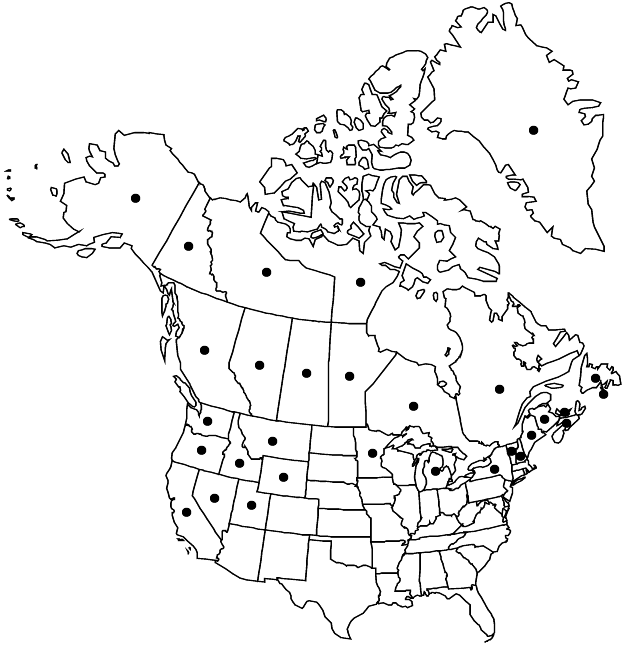Vaccinium uliginosum
Sp. Pl. 1: 350. 1753 ,.
Plants forming dense mats or open, extensive colonies; twigs of current season pale green, terete, glabrous or faintly puberulent, not verrucose. Leaf-blades usually glaucous abaxially, green to glaucous adaxially, orbiculate, ovate, or obovate to narrowly elliptic, 8–14 × 3–7 mm, membranous, margins entire, surfaces often faintly puberulent, sometimes hairy throughout. Flowers: sepals usually distinct; corolla white to pink, 3–4 (–5) mm, lobes 0.3–0.4 mm; filaments glabrous. Berries blue, 6–8 mm diam., glaucous. 2n = 24, 48, 72.
Phenology: Flowering Jun–Jul.
Habitat: Wet or dry acidic sites in boreal taiga, tundras, and alpine thickets and krummholz
Elevation: 0-2200 m
Distribution

Greenland, St. Pierre and Miquelon, Alta., B.C., Man., N.B., Nfld. and Labr. (Nfld.), N.W.T., N.S., Nunavut, Ont., P.E.I., Que., Sask., Yukon, Alaska, Calif., Idaho, Maine, Mich., Minn., Mont., Nev., N.H., N.Y., Oreg., Utah, Vt., Wash., Wyo., n Eurasia
Discussion
Vaccinium uliginosum is transcontinental in North America between 60° and 70° north latitude; farther north it is rare, especially in the Queen Elizabeth Islands. To the southwest, it is found as far as northern California and northwestern Utah. The summits of the White Mountains of New Hampshire form its southernmost limit in eastern North America. This wide-ranging plant shows considerable variation, notably in floral morphology. Subspecies have been recognized (cf. S. B. Young 1970); a review of morphological variation by H. J. Warr (1981) did not support the distinctiveness of infraspecific taxa.
Selected References
None.
Lower Taxa
"entire" is not a number."dm" is not declared as a valid unit of measurement for this property.